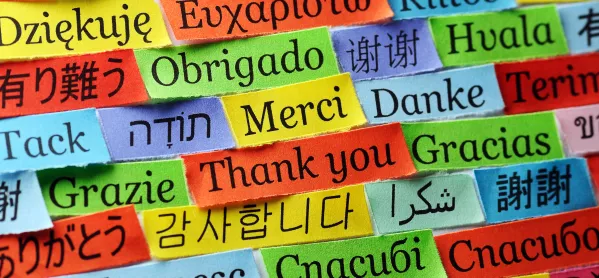“EAL is a problematic category,” states Victoria Murphy, professor of applied linguistics at the University of Oxford.
Murphy is a long-time researcher into English as an additional language (EAL) and on this week’s Tes Podagogy podcast she explains why using term brings multiple challenges.
“The way it is defined is so general, it really just highlights children who have another language in the home,” she explains. “It does not speak to whether and to what extent the child is exposed to English since birth or any other context, and it doesn’t say anything about their proficiency in English. And, importantly, it does not say anything about their knowledge of their home language or proficiency in that language.
“It is a group that is massively diverse. So any time we talk about EAL in general terms, we are really being a bit reckless.”
Murphy goes on to say that another issue she has with the term is that it is seen as a negative attribute.
“It is used as a deficit term - we assume there is a problem. It really doesn’t have to be a problem,” she argues.
Not enough financial support
In a wide-ranging discussion, Murphy talks about the problem with interpreting the performance data of EAL children too simplistically, issues with “immersion” programmes and the lack of support for schools in helping EAL children in the classroom.
“I don’t think there is enough financial support for children with linguistic challenges and I don’t think teachers have historically had enough support in supporting EAL students,” she says. “There is recent research that suggests that teachers generally feel unprepared to support students with EAL.”
Murphy also offers some insights into current research around the best pedagogy for EAL students, including “translanguaging”.
“Translanguaging is a little bit of a tricky construct - essentially it means drawing from the child’s other languages within the English classroom, so they can use those other languages as support while they are carrying out work,” she explains. “This approach recognises that the child comes to school with knowledge of another language, that it is a huge resource not just for that child but for the other children in that class if teachers were equipped to use that pedagogical strategy. The teacher would not need to know that home language, it is about a multilingual pedagogy.
“I hope to see more studies that will look at when this should be used or if it should be used, the research is in its infancy.”
You can listen to the podcast below, or find the full series available for free on iTunes or Podbean




